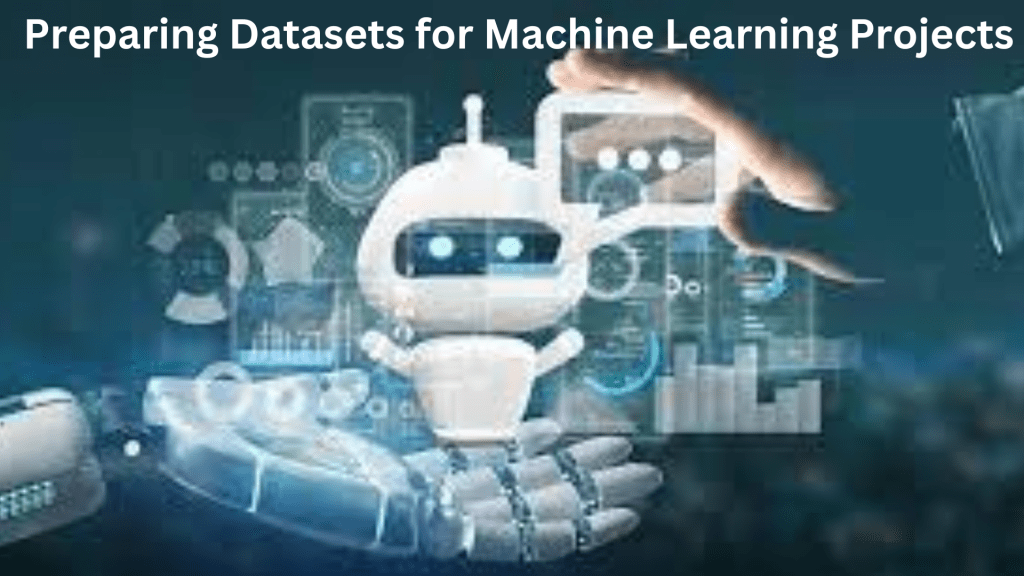
Introductions:
Datasets for Machine Learning Projects, high-quality datasets are crucial for the development, training, and evaluation of models. Regardless of whether one is a novice or a seasoned data scientist, access to well-organized datasets is vital for creating precise and dependable machine-learning models. This detailed guide examines a variety of datasets across multiple fields, highlighting their sources, applications, and the necessary preparations for machine learning initiatives.
Significance of Quality Datasets in Machine Learning
The performance of a machine learning model can be greatly influenced by the dataset utilized. Factors such as the quality, size, and diversity of the dataset play a critical role in determining how effectively a model can generalize to new, unseen data. The following are essential criteria that contribute to dataset quality:
- Relevance: The dataset must correspond to the specific problem being addressed.
- Completeness: The presence of missing values should be minimal, and all critical features should be included.
- Diversity: A dataset should encompass a range of examples to enhance the model’s ability to generalize.
- Accuracy: Properly labeled data is essential for effective training and assessment.
- Size: Generally, larger datasets facilitate improved generalization, although they also demand greater computational resources.
Categories of Datasets for Machine Learning
Machine learning datasets can be classified based on their structure and intended use. The most prevalent categories include:
- Structured vs. Unstructured Datasets
- Structured Data: This type is organized in formats such as tables, spreadsheets, or databases, featuring clearly defined relationships (e.g., numerical, categorical, or time-series data).
- Unstructured Data: This encompasses formats such as images, videos, audio, and free-text data.
- Supervised vs. Unsupervised Datasets
- Supervised Learning Datasets: These datasets consist of labeled examples where the target variable is known (e.g., tasks involving classification and regression).
- Unsupervised Learning Datasets: These do not contain labeled target variables and are often employed for purposes such as clustering, anomaly detection, and dimensionality reduction.
- Domain-Specific Datasets
- Healthcare: Medical imaging, patient records, and diagnostic data.
- Finance: Stock prices, credit risk assessment, and fraud detection.
- Natural Language Processing (NLP): Text data for sentiment analysis, translation, and chatbot training.
- Computer Vision: Image recognition, object detection, and facial recognition datasets.
- Autonomous Vehicles: Sensor data, LiDAR, and road traffic information.
Numerous online repositories offer open-access datasets suitable for machine learning applications. Below are some well-known sources:
- UCI Machine Learning Repository
The UCI Machine Learning Repository hosts a wide array of datasets frequently utilized in academic research and practical implementations.
Noteworthy datasets comprise:
- Iris Dataset (Multiclass Classification)
- Wine Quality Dataset
- Banknote Authentication Dataset
- Google Dataset Search
Google Dataset Search facilitates the discovery of datasets available on the internet, consolidating information from public sources, governmental bodies, and research institutions.
- AWS Open Data Registry
Amazon offers a registry of open datasets available on AWS, encompassing areas such as geospatial data, climate studies, and healthcare.
- Image and Video Datasets
- COCO (Common Objects in Context): COCO Dataset
- ImageNet: ImageNet
- Labeled Faces in the Wild (LFW): LFW Dataset
- Natural Language Processing Datasets
- Sentiment140 (Twitter Sentiment Analysis)
- SQuAD (Stanford Question Answering Dataset)
- 20 Newsgroups Text Classification
Preparing Datasets for Machine Learning Projects

- Data Cleaning
- Managing missing values (through imputation, removal, or interpolation)
- Eliminating duplicate entries
- Resolving inconsistencies within the data
- Data Transformation
- Normalization and standardization processes
- Feature scaling techniques
- Encoding of categorical variables
- Data Augmentation (Applicable to Image and Text Data)
- Techniques such as image flipping, rotation, and color adjustments
- Utilizing synonym replacement and text paraphrasing for natural language processing tasks.
Notable Machine Learning Initiatives and Their Associated Datasets
- Image Classification (Utilizing ImageNet)
Objective: Train a deep learning model to categorize images into distinct classes.
- Sentiment Analysis (Employing Sentiment140)
Objective: Evaluate the sentiment of tweets and classify them as either positive or negative.
- Fraud Detection (Leveraging Credit Card Fraud Dataset)
Objective: Construct a model to identify fraudulent transactions.
- Predicting Real Estate Prices (Using Boston Housing Dataset)
Objective: Create a regression model to estimate property prices based on various attributes.
- Chatbot Creation (Utilizing SQuAD Dataset)
Objective: Train a natural language processing model for question-answering tasks.
Conclusion
Selecting the appropriate dataset is essential for the success of any machine learning endeavor. Whether addressing challenges in computer vision, natural language processing, or structured data analysis, the careful selection and preparation of datasets are vital. By utilizing publicly available datasets and implementing effective preprocessing methods, one can develop precise and efficient machine learning models applicable to real-world scenarios.
For those seeking high-quality datasets specifically designed for various AI applications, consider exploring platforms such as Globose Technology Solutions for advanced datasets and AI solutions.